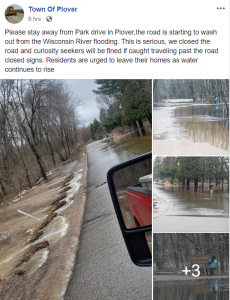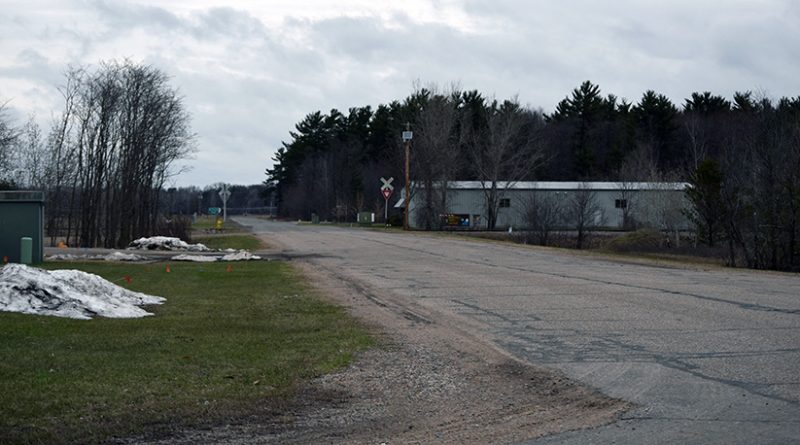Editorial: Tracking the evolution of a false news story
By Patrick Lynn
Getting the news right takes a lot of work.
Much of that work isn’t seen by the public. In a professional newsroom, your ego takes a daily beating. Staff members often poke holes in each other’s stories to avoid information gaps, poor context, or redundancies. Sources are always cited by name, and stories should contain a minimum of two named sources—three in controversial, or hard news, stories.
Sources are typically verified by an editor prior to publication, and stories are randomly audited by a third party for authenticity.
The safeguards are in place to ensure accuracy in news reporting, and the results of those safeguards are clear in the final product. All of these safeguards (checks-and-balances, if you will) require professional training and a lot of experience—as well as ongoing training—because they can be implemented incorrectly.
Or, as the Stevens Point area found out on Thursday, they can also be completely discarded.
Two local news publications published inaccurate information on seasonal flooding on April 18. The Stevens Point Journal published a series of photos on its website under the title, “Plover urges evacuation along Wisconsin River”, and stated, without an identified source, that “residents in the area have been evacuated.”
No story accompanied the photos, nor was any distinction made between the Village of Plover and the Town of Plover, the latter being a rural municipality to the south and west of the village and with some vast differences in geography.
About two hours later on April 18, the Stevens Point City Times ran a story titled, “More flooding engulfs Plover” which Town of Plover Chairman Tim Karcheski later called “completely made up.”
“Plover was not ‘engulfed,'” Karcheski said on Thursday.
The story, written by Taylor J. Hale, reported that “severe flooding in the Park Drive and Twin Towers Drive areas have left streets flooded, and residents worried.”
The story doesn’t quote any residents, or cite anyone by name, nor does it reference the fact that Twin Towers Dr., which is located between two cornfields in the Village of Plover, is about six miles away from Park Dr., which is located in the Town of Plover south of the bluffs along the Wisconsin River, and prone to seasonal flooding. Flooding along the river was characterized by the National Weather Service and Portage Co. Emergency Management as “moderate,” and not “severe.”
The author also failed to verify the flooding himself. A Metro Wire reporter drove the entire half-mile stretch of Twin Towers Dr. on April 18 and confirmed the road surface was dry and the surrounding area had no visible flooding.
The City Times article goes on to claim that a source, someone identified only as a “village worker” told the reporter, “Some residents refused to evacuate and will ride out flooding like in past years. Residents are urged to evacuate to dryer [sic] grounds, but a few remain that [sic] have gone through this flooding many times in the past, for the safety of residents, we urged them to evacuate.”
Village of Plover Administrator Dan Mahoney and Fire Chief Mark Deaver, along with Karcheski, all said they had not been contacted by any media outlets about the April 18 flooding until the Metro Wire attempted to verify with their respective offices the accuracy of both media reports.
However, all three confirmed no evacuation had been ordered in their respective municipalities.
The City Times‘ story has since been removed from its website but it was not immediately clear if any retraction or apology would be forthcoming. A request for comment from City Times/Gazette editor Joe Bachman was never answered. No editor was listed on the Journal’s “Contact Us” page, and a phone call to their Stevens Point office was transferred to Green Bay and on Friday, no one answered the phone.

Though neither story cited a Facebook post by Karcheski as their source, both were, no doubt, spurred by it. The post warned residents about the flooding, and that motorists trying to drive through the water could be fined by law enforcement.
Karcheski’s post was shared over 500 times. During a series of phone calls with the Metro Wire following the post, Karcheski said the road was rural and contained “a dozen or so” residents, calling them “seasoned veterans” who were familiar with the seasonal flooding. He attempted to contact each resident in person on April 18, he said, but made the post was made to warn residents he hadn’t been able to speak with personally.
Karcheski said he was “disappointed” with the inaccurate reports because no one contacted him before publishing the news.
“They both made up their own stories and I don’t know who to contact about it,” Karcheski said on Thursday. “You’d think they would at least call to check, you know?”
When a news outlet gets a story wrong, the fallout can range from a minor embarrassment to one of the worst days of a reporter’s career to a lawsuit, depending on the error. Every working journalist in the world has experience somewhere in that range. Spelling errors, misuse of a word, or improper syntax can show a reporter’s inexperience or an editor’s lack of training or focus, but these are minor infractions when placed against the act of publishing unverified information. When a reporter gets so many details of a story wrong, that chips away at the public trust in all media outlets.
How are readers supposed to know which news stories they can trust? There’s a difference between making a mistake and being flat-out lazy—how is the public supposed to know which is at play?
A trustworthy publication will always use named sources. It will always verify the information before publishing because its staff will understand readers rely on the information within their stories. It will always run a retraction and apologize when it makes an error because the media operates (or at least is supposed to) from a foundation of accountability and transparency. Taking heat for a few days is far more preferred than pretending it never happened.
The public deserves and should demand, from both the media and local elected officials, a much higher level of communication and service.
Patrick Lynn can be reached at [email protected]


